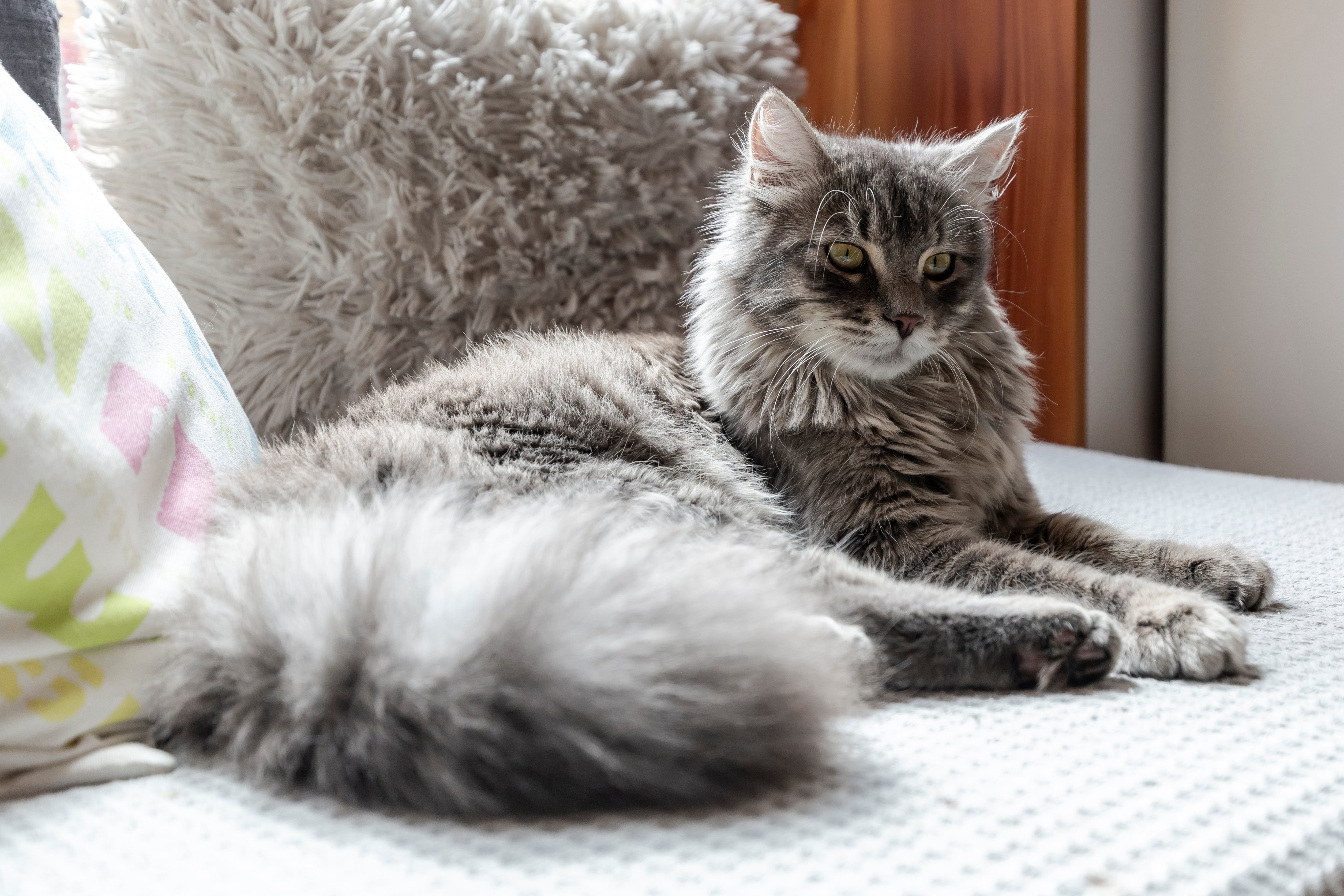Domestic Long Hair
The Domestic Long Hair cat gets its coat thanks to a recessive trait. The Domestic Long Hair cat is a type, not a specific breed, so there’s a lot of variety in the cats, who were first seen over 400 years ago. Only 10% of cats are considered to have long hair. They vary in look, personality, size, and stimulation needs. Generally, they are friendly, open, and engaging cats that thrive off of human interaction.
Breed characteristics carousel
Learn More
Need to Know
- Great for first-time cat owners
- Enjoys playing games and is active at home
- Playful and curious cat
- Sociable and dependent cat
- Slightly talkative cat
- Requires grooming
- Needs a bit of both indoor and outdoor space
- Great family cat
- Can be left alone
- Great for a relaxed home

Personality
Because the Domestic Long Hair cat is a type and not a breed, there is a lot of variety in the cat’s personality, ranging from cuddly to independent and from hyperactive to mellow. Most tend to be playful and eager, though, and are generally highly adaptable.
The Domestic Long Hair cat likely evolved from the cats of Russia, Persia, and Turkey, over 400 years ago. The theory is that the long-haired coat is due to a genetic mutation that occurred naturally so that the cats could adapt to and thrive in colder temperatures. They likely first came to America with European settlers as a way to control the rodents on board the ships.
The ideal owner of a Domestic Long Hair cat will vary as much as the cat’s personality. They are highly adaptable cats that do well in various environments and living situations. Owners should be prepared for generally intelligent and curious cats, and personalities that can range from social butterflies to introverts. Their long coats require more frequent grooming to prevent mats.
Most Domestic Long Hair cats need a good bit of exercise and mental stimulation to prevent behavioral issues. They love playtime, climbing, jumping, toys, and window watching to be interspersed with their naps.
Domestic Long Hair cats don’t need any particular space so long as they have warm spots to curl up in. They could benefit from vertical play structures and even enclosed outdoor space if owners have room.
Frequently brushing a Domestic Long Hair cat’s coat is a good idea to prevent matting and tangles. Any mats should be taken care of by a professional groomer.
Domestic Long Hair cats are generally curious and intelligent and can learn basic commands and even clicker training through positive reinforcement techniques, patience, and consistency.
Domestic Long Hair cats make good family pets. Most are curious, smart, gentle, and loving and get along well with other cats and pets. They generally do well with children of all ages as well, especially older ones who can respect a cat’s space. They are fairly low-maintenance cats overall.
The cost of a Domestic Long Hair from a breeder is significantly more than the cost of adopting one from a local shelter or rescue. The adoption fee usually covers additional items such as spaying or neutering, vaccines, and microchipping.

Learn more about feeding and caring for your Domestic Long Hair on Purina.
Did You Know?
- Some Domestic Long Hair cats have neck ruffs, which are bits of fur that extend beyond their heads in a regal and elegant fashion. Some have foot and ear tufts, too.
- The Domestic Long Hair cat is not a particular breed but rather a type of cat.

